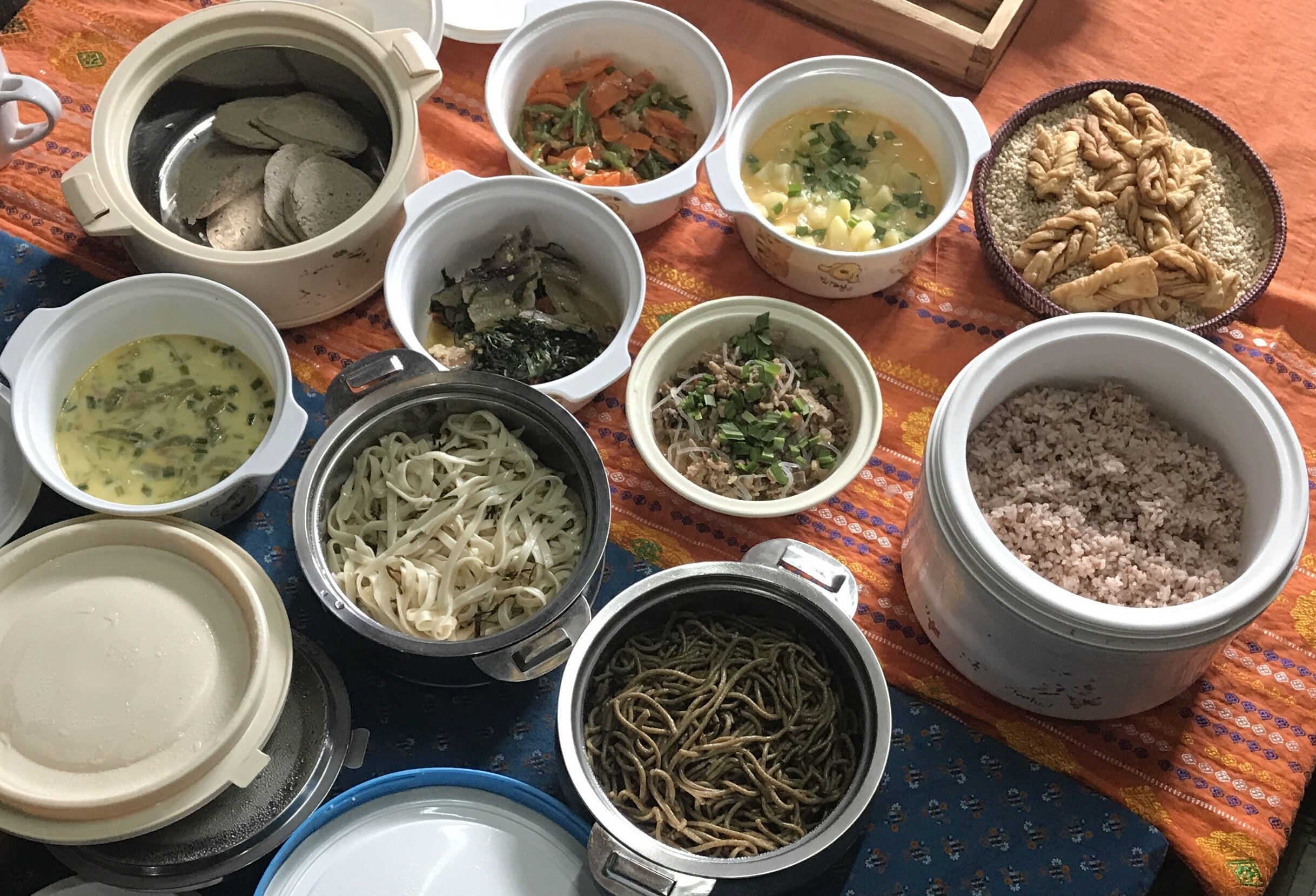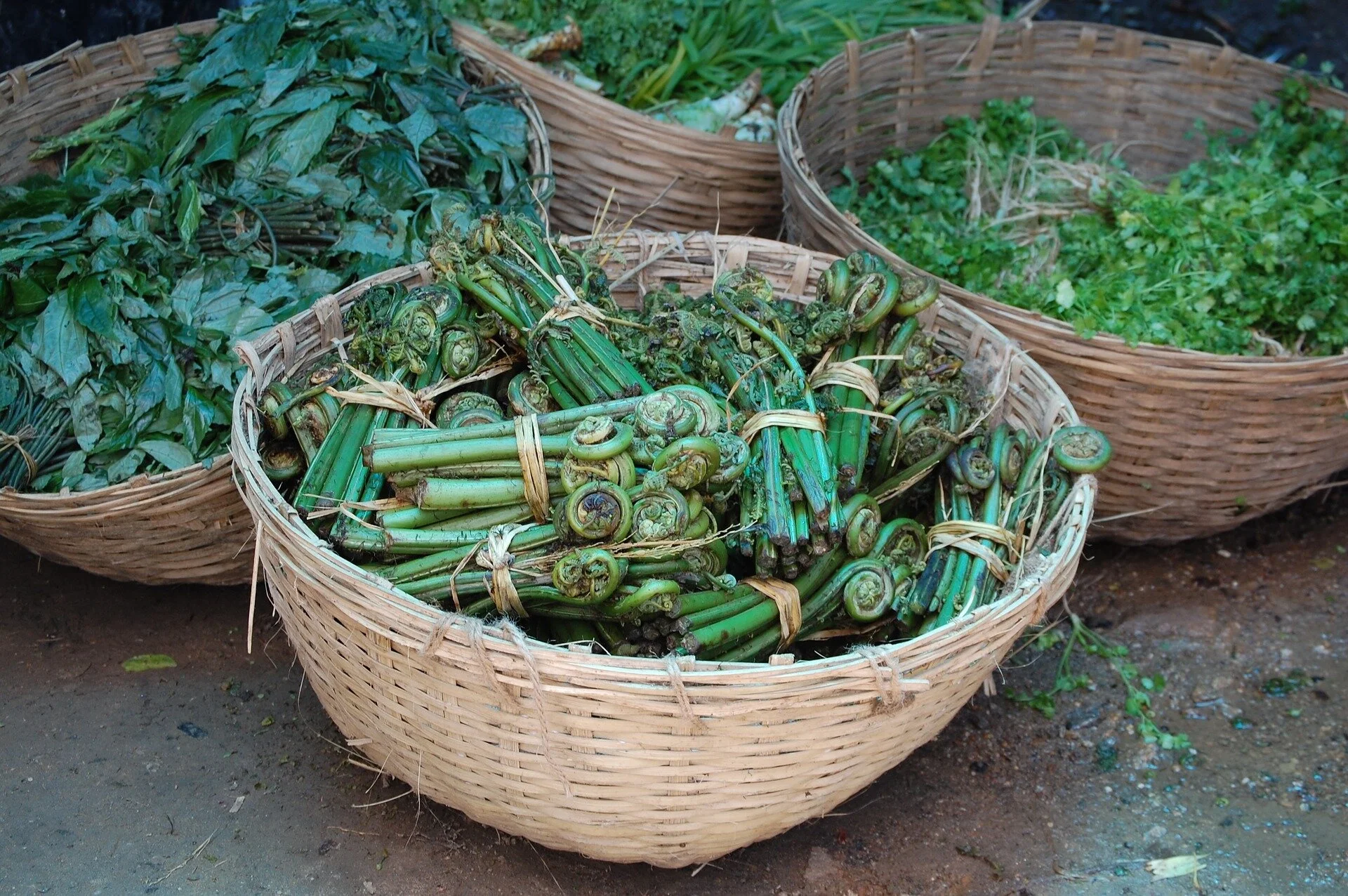Planning a trip to Bhutan? One question on your mind (other than the obvious one of when will it be safe to travel there post COVID-19) might be ‘What is the food like in Bhutan? ’. Despite its close proximity to India and Nepal, Bhutanese cuisine is little heard of and completely different to that of its neighbours.
The first thing I heard about food in Bhutan was ‘It’s really spicy and everything has chillies in it.’ Whilst in some ways that is true and the national dish ema datshi is certainly very spicy, there are lots of other dishes that are gentler on the palate.
A great place to introduce yourself to Bhutan’s traditional dishes is by having lunch at one of several farmhouses around the Paro Valley. These rustic eateries lay on authentic lunches for visitors. We had lunch at the welcoming Ugyen farmhouse which is a short drive from Paro Dzong. Seated in a traditional Bhutanese dining room, dish after dish appeared, steaming hot and very appetizing. My favourite was asparagus and locally grown red rice. This special variety of rice, red in colour with a nutty taste is known for it’s high nutritional content. Red rice has been grown in the fertile Paro Valley for thousands of years.
My absolute favourite vegetables in Bhutan are fiddlehead greens, the furled fronds of a young fern. Harvested early in the season before the frond has opened and reached its full height, these ferns are rich in antioxidants, iron and fibre. They are also a great source of omega-3 and omega-6 fatty acids. Nakey Datshi is a wonderful dish with fiddlehead greens lightly tossed in oil and cooked with yak or cow cheese. Vegan versions without the cheese available too.
Image by Marie O'Malley from Pixabay
Next stop was Paro Sunday market where local traders sell huge amounts of chillies, local cheese (to go in the ema dastshi) and all sorts of unusual vegetables. The market is a fabulous place to explore, meet the locals and find out more about Bhutan’s incredible range of fresh produce.
Bhutan’s capital Thimpu, has loads of good eating options. For those hanging out for Western food, there are a couple of good pizzerias. Do remember to ask for pizza without chillis if you prefer. This must be the only place in the world where you can order Ema Datshi flavoured pizza, definitely an acquired taste!
My hotel Zhiwaling Ascent nestled in a forest just outside Thimpu, not only has a Kiwi chef (training young Bhutanese chefs in international cuisine) but serves devine home-made sour dough bread and dukkah for those missing a taste of home. The risotto on the all day dining menu was heavenly with fresh flavours.
Travelling further east, I wasn’t expecting to find Swiss cheese and a micro brewery in Bumthang in Central Bhutan. There is quite a story behind the bucolic Swiss Guest House, famed for their fondue evenings, chocolate cakes and home made Swiss muesli. When, Fritz Maurer, Swiss cheesemaker answered an ad from the Bhutanese government 50 years ago he had no idea that he would not return from the little place in the middle of Bhutan that he came to call home. Fritz’s family now make several cheeses including Emmental, Gouda, and Gruyere. Find out more
Back in Western Bhutan, in the picturesque Haa Valley, I was treated to delicious local trout at the family run Soenam Zingkha heritage lodge. Personally overseen by the friendly owner, the kitchen produces some of the tastiest food that I encountered in Bhutan.
Bhutan is a great place for vegans and vegetarians. There are plenty options especially at the buffets available at most of the tourist hotels. Indian dishes such as daal, chickpea and bean curries are common, and for vegetarians there are dishes with paneer. These tend to be less spicy than their Bhutanese counterparts.
There are more Western style cafes opening up especially around Thimpu and Paro. One unusual place is Your Cafe at the Neyphug Heritage Complex near Paro Airport. Set in previously abandoned ruins, the traditional Bhutanese mud-rammed building is now a landmark with its rustic character. The former residence of His Eminence The Neyphug Trulku Rinpoche, the complex remains part of Neyphug Monastery. Fully vegetarian, all proceeds from the cafe goes to the sustainability and funding of the monastery.
Yes, the food in Bhutan is completely different to almost anywhere else in the world and you may be apprehensive about trying some of it. But my advice is to give it a go, you might be surprised at how much you enjoy some of the culinary delights Bhutan has to offer.
To design your own foodie tour of Bhutan visit www.beyondtheclouds.org.nz















